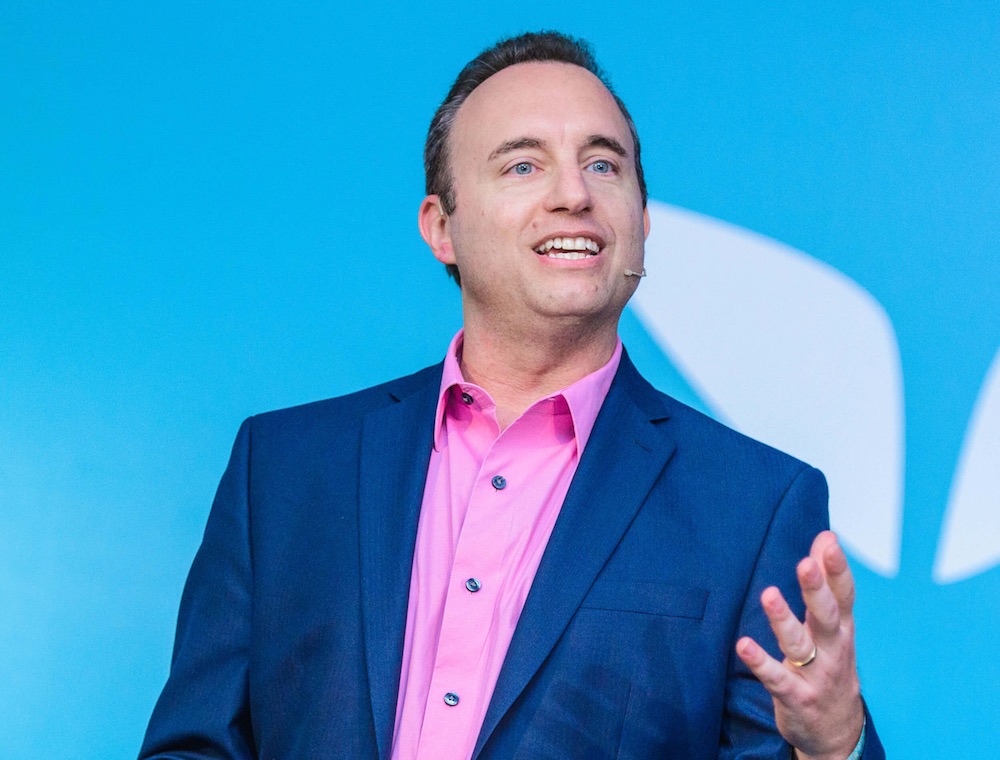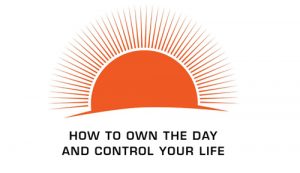Finding AFFORMATIONS with Noah St. John

Since 1997, Noah St. John has been teaching people how to define—and achieve—success. He has written 14 books, led hundreds of workshops, and spoken to eager audiences all over the world.
But this career path didn’t materialize overnight. A poverty-plagued childhood, physical handicap, and professional failure all gave him the life experience he needed to formalize his life-changing AFFORMATIONS®—the foundation of his self-empowerment strategies.
Noah sat down with us recently to talk about how he made success out of his painful hardships, and how he inspires countless others with his story and his teaching every day.
The funny thing about a lot of motivational speakers is that you seldom hear about their growing up years—often the source of good and bad motivations in adulthood. What was yours like?
I grew up in the small town of Kennebunkport, Maine. My family was dirt poor—which was particularly apparent because we lived in a rich neighborhood. I was in those early years that I saw a huge gap between the haves and have-nots—the haves were everyone else and the have-nots were my family.
But I also learned something else. I learned that hard work is not the key to success. My parents worked harder than most, but they didn’t get ahead. On the other hand, our neighbors had a ton of money. I can’t tell you how many times I heard, “We can’t afford that” growing up. I hated it. I hated the not-enough-ness. And really, that’s what drove me to the work that I do know.
A lot of kids in your situation have dreams of high achievement—Ivy League college, Hollywood acting, or something like that. Did you have a similar dream?
Well, actually, I decided to go to Boston Conservatory to be a dance major. That goes back to my childhood. For many years I had weak legs and had to wear leg braces. My pediatrician at the time encouraged me to take dance lessons to build strength. Ultimately, I decided that should be my career.
I was a dance major at BC for one year, then I decided to become a professional ballet dancer. Unfortunately, I had a major injury at age 22 that put me out on the streets with no usable education and no money. I was so depressed. I actually became suicidal.
That’s an awful experience. How did you get through it?
By working survival jobs—jobs that gave me enough to eat. Eventually, I made enough to go back to school at Hampshire College at age 28. And instead of studying something in the dance realm, I became a religious studies major.
An interesting turn. Did you discover some writers during your time at Hampshire who ultimately inspired your current work?
I did. It wasn’t long before I discovered Dr. Stephen Covey, who wrote the pivotal book, “The 7 Habits of Highly Effective People.”
Ah, yes. He’s been an icon for years. Did his book lead to your epiphany on AFFORMATIONS®?
Not directly, but it was part of the inspiration. The day I came up with AFFORMATIONS®, I was in the shower in my college dorm thinking about the idea of “affirmations”—the self-help tactic that just about every book I’d read on the subject encouraged. Honestly, they never did anything for me and probably hurt more than helped.
But it occurred to me that “affirmations” are statements. I realized that the human mind doesn’t do well with statements—it operates best with questions.
Here’s an example I often use at my workshops. I’ll start by asking everybody to say out loud, “I’m so rich.” Then they laugh, and when I ask them why they’re laughing, they say it sounds ridiculous.
But when I ask them to turn this into a question—“Why am I so rich?”—the mind starts working. It illuminates what you have and what you don’t, where you are and where you’re going—or not going.
SUGGESTED READING: Skip Affirmations—Try AFFORMATIONS!
There’s another part of your self-help approach that you’ve called Success Anorexia. What’s that about?
Yes, that came to me six months after I discovered AFFORMATIONS®. After my shower epiphany, I wrote my idea down but didn’t know what to do with it.
Then came Success Anorexia—the simple idea that we need to give ourselves Permission to Succeed®. As soon as I formulated this concept, I knew I had my teaching—a combination of Success Anorexia and AFFORMATIONS®.
This led, of course, to many books on these topics as well as speaking engagements and coaching opportunities. But what does the concrete approach to self-improvement look like using these tools?
In the broad spectrum, I teach people about the Inner Game and the Outer Game. I would argue that every issue/challenge people face falls into one of those categories.
The Inner Game is in your brain—beliefs, values, decisions, and so on. You see the effects of these, but you can’t see the things themselves.
Then, there’s the Outer Game—concrete tools like sales models, websites, and other physical things.
Here’s the problem: Most people are only focused on their outer game. So, I encourage them to ask questions (AFFORMATIONS) about their own beliefs and values so that they can get rid of the “head trash” that’s preventing the outer game from being successful.
I like to use this analogy: For everyone, there’s a gap between where you are and where you want to be. So, we build bridges to get there—but we never finish them. We build half of a bridge then get distracted. We start again. We get pulled back. Before you know it, we have 20 half-built bridges and have gone nowhere.
Let’s assume that building a bridge, start to finish, is the success story you’re looking for. How can you determine if someone is successful? What are the materials that a complete bridge is made of?
There are four of them: time, energy, relationships, and money. When you have enough of all of these, you have a successful life.
But you also have to ask if you are adding value to the world. I think that’s critical, too.
You’ve certainly faced your share of challenges in life. Can you call out the biggest, and how you have overcome it?
Trusting the wrong people. I’m a very trusting person, and I had to learn the hard way that not all people are trustworthy. There are some who have stolen $100,000s from me and it sucks.
I’m more cautious, more skeptical these days. In truth, the world’s marketers often out-shout the truth with lies. That’s how I realized that I needed to become better at marketing.
The great news is that I now teach marketing skills to my clients—both the Inner Game and Outer Game. I’m able to help them overcome almost any business or life challenge they’re facing using these tools.

Looking to turn your AFFORMATIONS into lifelong success? Get a copy of the FREE Perfect Day Formula!
Let’s talk about your day-to-day life. What does that look like?
The first thing I do when I wake up is practice gratitude. I am immensely thankful for everything I have—and recognizing that is important to me. After all, I grew up in an environment where I had almost nothing.
Then I have a stretching/yoga routine that lasts about 15-20 minutes. As we get older, stretching is very important. (Though a bit easier for me, since I was formerly a ballet dancer. [Laughs])
I work from home, so after yoga, I make the 17-second commute to the office. I do NOT check email first thing—and I advise everyone else to do the same. As I see it, email is a compendium of other people’s agendas—people telling you what to do. Instead, ask yourself what YOU want to do today. In other words, draw up your blueprint for the day based on YOUR priorities, and keep your agenda simple.
One of the things I teach is having more by doing less. We have lots of distractions in our lives and much of the information we get is not valuable to us.
So how do we manage it? I suggest unsubscribing from newsletters that don’t give you value, cut back on e-mail use, and focus on implementation. That’s my MO throughout the day.
At night, I reverse the process—yoga, gratitude, bed.
Is there a way you define your daily goals outside of the blueprint you mentioned?
There is a structure for that—what I call targets, projects, and tasks. I don’t even think about goals that much. I find goals, semantically, seem unattainable, whereas a target is something I’m going to hit.
So, for example, a target would be to finish a book. A project would be to finish a chapter in that book, and the tasks would be all the steps leading up to completion of that chapter.
That seems easy enough. So why do you think people struggle so much with productivity and, ultimately, success?
People don’t give themselves Permission to Succeed. I know I keep coming back to it, but it’s true. And this will be the same struggle for eternity. That’s why I’m passionate about what I do. Most people don’t even know they’re not giving themselves the permission they need, and that’s where the conversation has to start.
That’s an anxiety-inducing conversation, which is a great segue to the general issue of anxiety. Many people suffer from it, and sometimes it’s rooted in their perceived inability to get ahead, sometimes in their own indecision, sometimes in worry about obstacles to their success. Is this one of your demons? How do you deal with and help others to get past it?
I think I’m an anxious person by nature. I was raised that way, and born that way. I’ve had to overcome it.
I wouldn’t say I suffer from anxiety, though—not anymore. That’s because I am lucky enough to have an amazing support system—family, friends, and peers—who help me manage that anxiety. Who give me perspective.
I also can’t stress this enough: Gratitude is the cure for a lot of worry and anxiety. Just being thankful for what you have goes a long way.
It’s been 20 amazing years for Noah St. John. What’s next?
At SuccessClinic.com, one of our companies, our goal is to empower 10,000 entrepreneurs to double their performance and profit. That’s the numbers goal, but my real mission is to eliminate not-enough-ness in the world. We have such unequal distribution of wealth and goods. It needs to change.
And what about you? What’s Noah doing for Noah?
Honestly, just relaxing. Curling up with a good book makes me happy. Spending time with my wife and kids, our dog, and cat. I’m a very simple guy. I live a happy, drama-free life, and I’m thankful for that.
#
For more information about Noah St. John and to get his new book FREE, visit NoahStJohn.com.